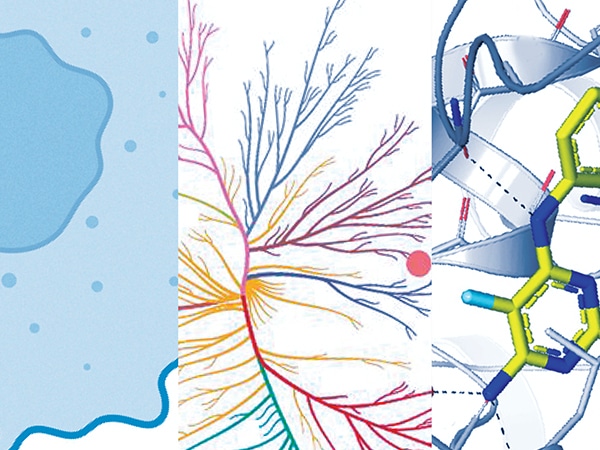Rethinking DCIS: A Conversation with Dr. Kornelia Polyak
Sometimes referred to as stage 0 breast cancer, ductal carcinoma in situ (DCIS) is a noninvasive growth of abnormal cells within the breast’s milk ducts. More than 50,000 cases of DCIS are diagnosed each year in the United States, and without treatment, some of these would progress to invasive breast cancer.
To help advance research into the pathology, progression, and clinical management of DCIS, the American Association for Cancer Research (AACR) will host a special conference, “Rethinking DCIS: An Opportunity for Prevention?”, in its home city of Philadelphia September 8-11.
We spoke with one of the meeting’s co-chairs, Kornelia Polyak, MD, PhD, FAACR, a prominent figure in the breast cancer field, about the state of DCIS research and what to expect from the upcoming conference.

MD, PhD, FAACR
Professor, Dana-Farber Cancer Institute
Cancer Research Catalyst: What is DCIS?
Polyak: DCIS is a pre-invasive breast lesion that is typically detected through a routine mammogram. DCIS accounts for about 25 percent of all newly diagnosed breast cancer cases in the United States, and some estimate that up to 40 percent of DCIS cases will progress to invasive cancer over the patient’s lifetime if left untreated.
Despite its prevalence, there is still much to learn about this disease. We do not yet have a clear understanding of why some DCIS cases progress to invasive breast cancer and others do not. As a result, the treatment approach is not very standardized, with some undergoing a lumpectomy, others a complete mastectomy, and some even receive systemic therapy.
Research will be key to filling in some of these knowledge gaps. I’m very excited about the upcoming meeting. It is one of the first meetings to be completely dedicated to DCIS, and it will bring together almost all of the major leaders in the field.
Cancer Research Catalyst: How will basic and clinical research be balanced at the meeting?
Polyak: The program is quite comprehensive and covers the gamut of DCIS research, ranging from basic biology to clinical studies.
For basic scientists, we will have several sessions on molecular profiling studies of DCIS, including two large consortia that aim to identify biomarkers of progression and recurrence. We will also have sessions on pathology, the microenvironment, and experimental models.
Saturday is mostly clinical sessions. There will be a session on surgical management, as well as findings from clinical trials evaluating a “watchful waiting” approach for patients with DCIS, similar to what is employed for some patients with prostate cancer.
Another thing that should be exciting for clinicians is the debate about the clinical management of DCIS patients, which will center on two extremes: At one end, you have people who say you don’t need to treat DCIS at all, and then at the other end, you have people saying you need a more aggressive local and even systemic treatment because progression is always a possibility. The other debate is whether DCIS should even be considered cancer since it has such a low risk of progression, and in many cases would not even have been detected were it not for a routine mammogram, which you could argue is leading to overdiagnosis. Calling DCIS cancer may also elicit stronger emotions in the patient, so there is a psychological component to consider as well.
The problem is that we do not have clear biomarkers to predict which DCIS are likely to recur and which are not, which is where the data from the basic molecular profiling studies will be important. There are also very exciting developments on using imaging and artificial intelligence (AI) to predict progression and recurrence, which will be covered in their own sessions.
Cancer Research Catalyst: The full title of the meeting is “Rethinking DCIS: An Opportunity for Prevention?” Can you discuss what strategies for prevention are under investigation, and which, if any, will be featured during the meeting?
Polyak: Prevention can refer to preventing progression of DCIS to invasive breast cancer or preventing the occurrence of a secondary cancer. Patients diagnosed with DCIS have an increased risk of developing another breast cancer in the same or in the opposite breast, whether or not the DCIS progresses.
There are clinical trials evaluating tamoxifen and surgery that have shown promise in preventing secondary breast cancers in patients with DCIS. Vaccines and immunotherapy are also under investigation as potential ways to prevent secondary cancers or progression of DCIS to invasive cancer. This topic will be covered mostly in the clinical sessions but will also be featured in the session on the DCIS microenvironment, including in my presentation where I will discuss unpublished data that suggest that a patient’s immune health influences their risk of DCIS progression. This lends credence to the idea of using vaccination or immunotherapy to boost one’s immune system to prevent progression or even a secondary cancer.
Cancer Research Catalyst: You will be chairing a session on molecular sequencing. What is the role of molecular sequencing and other large-scale data in DCIS research and clinical management?
Polyak: When I started my lab in 1998, we were very interested in understanding what drives the progression of DCIS. We and others in the field did gene expression profiling on DCIS and invasive breast cancer cells to look for changes that might be causing disease progression, but there weren’t any genes or mutations that really seemed to be consistently different between DCIS and invasive cancer. However, profiling of all the cells in the microenvironment—myoepithelial and stromal cells, immune cells, etc.—revealed some significant changes associated with progression, such as a decline in activated T cells and increased immune suppression.
To better understand the molecular changes behind tumor evolution, the National Cancer Institute (NCI) started the Human Tumor Atlas Network, which compiles molecular sequencing data from different stages of cancers, including from preinvasive lesions like DCIS. There is also the Precision Consortium, a Cancer Grand Challenges project co-founded by the NCI and Cancer Research UK, which aims to understand the molecular changes associated with DCIS progression. Studying these large cohorts with follow-up will help identify markers that predict the risk of progression. Results from these two consortia will be featured in a session of the meeting.
Presently, molecular sequencing is not used much in the clinical management of DCIS. Since systemic treatments such as hormone therapy or HER2-targeted therapy are not commonly used to treat DCIS, molecular profiling of the disease is not relevant to clinical practice. Most of these molecular tools and sequencing are utilized for research at this time.
Cancer Research Catalyst: How does DCIS evolve to invasive breast cancer? What is the significance of the microenvironment in this process?
Polyak: My lab was among the first to suggest that the microenvironment and the myoepithelium (the outer layer of the duct) have roles in progression—this was back in 2004. Recent studies using more powerful technologies have also had similar findings. For example, myoepithelial and immune markers were predictive of progression in a cohort of patients within the Human Tumor Atlas Network consortium.
These data indicate that it is microenvironmental changes—and not acquiring new mutations—that are important for progression. This is consistent with the fact that DCIS and invasive breast cancer cells have pretty much the same mutations. So far, nobody has found a gene mutation that only appears once DCIS progresses to invasive breast cancer. There may be some differences in copy number variation, but the data really seem to suggest that progression is due to changes in the microenvironment.
Additionally, your pre-existing immune status likely plays a role. If you have a more diverse immune system, then your tumor tends to be infiltrated with more immune cells and have higher immune activation. With a larger immune repertoire, you have a greater ability to respond to the cancer and a lower risk of developing invasive breast cancer. This is an area that I am very excited about. I think this provides opportunity for some interventions in patients whose DCIS has a higher risk of progressing.
Cancer Research Catalyst: What are the latest advances in diagnosing and managing DCIS that will be covered at the meeting? Which are you most excited about?
Polyak: Currently, most DCIS cases are diagnosed by mammograms. Magnetic resonance imaging (MRI) is a more sensitive and precise technique, but due to its high cost, it is not routinely used for people with average risk. I think there will likely be some discussion at the meeting about shifting toward more widespread, but less frequent, use of MRI. There will also be presentations on combining MRI with AI to predict progression or recurrence of DCIS.
I’m very excited about the prospect of AI for imaging because it would allow us to noninvasively identify patients with high-risk disease without needing tissue samples for molecular profiling. The other benefit of AI is that it would be more widely applicable worldwide compared to molecular sequencing, which can be prohibitively expensive and time-consuming for places with fewer resources. AI could be designed to require only a computer program, or maybe pathologists could simply scan imaging results to a company that could run the analysis.
I’m also very interested in looking at the patient as a whole—their immune status, age, ethnicity, whether they have had children, their BMI, quality of life, treatment preferences, etc.—because these could all influence their risk of disease progression, the type of treatment they receive, and their clinical outcomes. This is another area where AI could be beneficial: By combining these factors with imaging data, AI could formulate a personalized risk prediction score to guide treatment decisions tailored to each individual patient.
Registration for in-person attendance to the AACR Special Conference “Rethinking DCIS: An Opportunity for Prevention?” is now open. Registration for on-demand access to recorded sessions and other virtual content will open on September 12, 2022.



